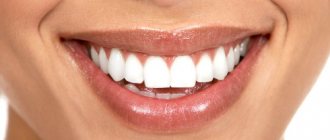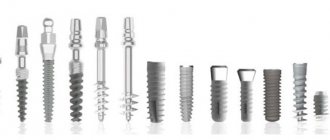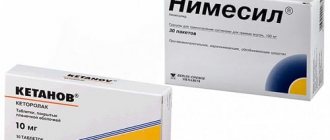In cases where pulsating sensations are accompanied by aching pain in the gums, we can talk about one of the most unpleasant dental problems, since even painkillers are usually powerless.
There is no single answer to the question why the gums are pulsating: it could be the result of the dentist’s careless work (a mistake made when filling a tooth) or a consequence of pathology.
This article is about the possible causes of pulsation in the gums and recommendations regarding actions that are advisable before seeking dental care.
The essence of the method
The device converts electromagnetic waves into acoustic, infrasound waves. The sound produced by the device is not recognized by the human ear, since it is below the threshold of perception, but it has an effect on the body.
Table 1. Effects of knee shock therapy
| Effect | Development mechanism |
| Anesthetic. | Microcirculation is stimulated due to the growth of new capillaries, metabolism increases, swelling, inflammation, and pain disappear. |
| Restorative. | The severity of fibrosis and sclerosis in tissues is reduced, the production of collagen and proteinases is stimulated, and regeneration of intra-articular connective tissue occurs. |
| Normalization of muscle tone. | Blood flow increases, muscle tension decreases, and motor activity improves. |
| Elimination of calcifications. | Sound waves act in the affected area, destroying pathological formations. |
When the knee is damaged, tendons are torn. Even if they are mild, represented by micro-tears, they still heal with the formation of scars, while elasticity is lost, discomfort and pain appear. Acoustic waves act at a certain depth, which is set by the doctor, as a result of which micro-oscillations of the cells occur. Fragile scar tissue, which has just begun to form, is destroyed. The surrounding healthy cells are not damaged. On the contrary, microcirculation improves in them, and the effect of deep massage occurs.
What does pulsation in the gums indicate?
Pulsating sensations in the gum against the background of its swelling and pain are a clear signal of the presence of an inflammatory process in the mucous membrane associated with injury to soft tissues and the penetration of infection into them (the strength and frequency of attacks are important in diagnosis).
In addition, the symptom may be a consequence of various pathological processes. The most frequently diagnosed are:
- progressive caries short-term attacks of pulsating pain are possible with carious destruction of the middle and deep stages, most often provoked by external irritants - such as a reaction to cold/hot, sweet/salty.
- acute pulpitis is a complication of caries associated with the penetration of harmful microorganisms deep into the dental tissues: upon reaching the pulp, they provoke a serious inflammatory process, accompanied by severe painful sensations, which usually intensify at night.
- periodontitis is a consequence of untreated pulpitis (or, alternatively, the result of poor-quality treatment of dental canals), accompanied by the formation of a purulent abscess at the root of the tooth.
Other factors can also provoke pulsating pain in the gum tissues; only a specialist can determine the real cause of the problem, therefore, if you feel pulsation in the gums, do not delay your visit to the dentist!
When is shock wave therapy prescribed for the knee?
The procedure helps to quickly cope with pain in the knee joint caused by a variety of processes. Combines well with other treatment methods: kinesiotaping, massage, drug therapy, phonophoresis of glucocorticoid drugs. In most cases, shock wave therapy allows one to avoid or delay surgery.
Shock wave therapy for the knee. Indications:
- pain when walking and at rest,
- sensation of a foreign body in the knee,
- discomfort when moving,
- lack of effect with conservative treatment.
Table 2. SWT on the knee joint: what it does
| Disease | Effect of UVT | Peculiarities |
| Knee arthrosis. | Anesthesia. Destruction of old adhesive formations. Proliferation of blood vessels. | Highly effective in cases of severe pain in combination with minor radiological changes. |
| Patellar tendinitis (jumper's knee) | Regression of symptoms, tissue restoration. Prevention of relapse and chronicity of the process. | The results are better if treatment is started in the first days of the disease. Return to training is possible within 5–7 days. |
| Iliotibial tract syndrome (runner's knee) | Eliminates myofascial trigger points, reduces pain, improves ligament flexibility, and increases range of motion. |
The most common reasons for visiting a dentist
As we have already seen, pulsation in the gums can be the result of an injury to the mucous membrane or a consequence of one of the dental diseases. Now let’s take a closer look at the types of painful sensations that patients who are concerned about this symptom most often go to the dentist with.
Pulsation without pain
Pulsating sensations in the gums without significant pain are the most likely symptom of the development of apical periodontitis: the process of releasing space for purulent exudate that accompanies the problem causes the sensation of a distinct pulse within the jaw.
As a rule, there are no unpleasant sensations at rest, but they appear under any stress (during hygiene, when eating food, when applying pressure). The symptom is characteristic of any inflammatory processes in periodontal tissues, as well as in the initial stages of the formation of a hilar cyst.
Discomfort under the crown
The appearance of pulsation under the crown is evidence of unprofessional work by the dentist: the most common cause is infection during root canal cleaning or poor quality treatment of the nerve.
The only way out in such a situation is to urgently consult a doctor: a delay in eliminating the consequences of such a medical error can lead to tooth loss.
Discomfort under the filling
Unlike the previous case, pulsation in the gum under a recently filled tooth does not always indicate a mistake by the dentist. It is important to distinguish the stage of treatment here:
- When installing a temporary filling, pain and pulsating sensations are acceptable during the first few days, since temporary filling is most often carried out with the addition of a devitalizing agent to destroy the neurovascular bundle. The killing of the pulp occurs gradually, but a visit to the doctor is justified if the discomfort persists for more than 2-3 days.
- If discomfort is felt under a permanent filling, it is advisable to get dental care as quickly as possible. The causes of pain can be different; a competent diagnosis based on an X-ray examination of the problem tooth is necessary.
Discomfort in the area of the extracted tooth
Unpleasant sensations, including throbbing pain, after tooth extraction are a natural and inevitable phenomenon, since it takes time to restore damaged tissue.
But after such an operation (especially after the removal of a wisdom tooth), patients should listen very carefully to their feelings so as not to miss the moment of possible complications, such as alveolitis (suppuration of the tooth socket as a result of the loss of a blood clot protecting the wound from infection).
Advantages of knee shock therapy at the Family Doctor clinic
Our clinic has existed for more than a quarter of a century. This is a reliable medical institution that helps to cope with almost any disease. Highly qualified doctors will perform the SWT procedure in the building of the Family Doctor clinic on Baumanskaya and in the building of the Family Doctor clinic, located next to the Sportivnaya metro station. You can choose the nearest one - the quality of medical services is equally high everywhere. SWT is carried out using the SWISS DOLORCLAST MASTER device, EMS SWITZERLAND. Relief is felt after the first session, the effect lasts a long time, accumulating for another two weeks after the last session. If you are worried about knee pain, come to our clinic or call a doctor to your home.
ethnoscience
The main recommendation is decoctions of medicinal herbs (chamomile, sage and oak bark): a teaspoon of crushed dry plant in 200 ml of boiling water, infuse, strain and use for rinsing the mouth.
You can also:
- apply cold to the cheek;
- rinse with a soda-saline solution (2 grams of salt and soda per glass of warm water), for acute pain - every quarter of an hour;
- chew propolis (provides slight numbness of soft tissues);
- Apply a cotton wool soaked in eucalyptus or clove oil to the tooth.
Although these recommendations are time-tested, prior consultation with a doctor is advisable.
Popular questions
How long does knee treatment last?
You need to conduct 4-6 sessions lasting 15-20 minutes. The pain decreases after the first session, but after completing the entire course, the duration of remission is much longer.
How often are sessions held?
Sessions are held at intervals of 3-7 days, so you do not need to come to the clinic every day.
When can I return to sports?
When performing shockwave therapy, a protective regime with unloading of the affected joint is recommended. With professional classes, you can return to training faster, but you need to remember that you cannot exercise immediately after the procedure. Due to the analgesic effect, there is a risk of not calculating the correct load and re-injuring the knee.
pharmaceutical products
The choice of a pharmaceutical painkiller should be made taking into account the characteristics of the pain syndrome - its intensity and frequency:
- for moderate pain, non-steroidal anti-inflammatory drugs (Aspirin, Paracetamol) are suitable, which can reliably alleviate the condition for a couple of hours; if pain increases in the evening, you can add an antispasmodic (Spazmaton, No-shpa)
- with severe pain and pronounced pulsation in the gums, more powerful drugs will be required - such as Nise, Ketorolac, Nimesulide.
It is important to understand that painkillers do not solve the problem; pain relief is only a respite that does not relieve the need for dental treatment.
After eliminating the acute manifestations of the inflammatory process, it is necessary to consult a doctor as soon as possible.
By postponing a visit to the dentist, saving yourself from pain using folk or pharmacy remedies, you risk bringing the situation to a critical point, when saving the tooth becomes impossible!
Symptoms
When the maxillary cavity becomes inflamed, a person suffers from an unpleasant sensation that occurs near the molars, which are located in the upper jaw. The pain manifests itself acutely, can be dull or aching, and pulsating occurs when pus accumulates in the periodontal tissue. The unpleasant sensation becomes even stronger while running and walking.
Caries or periodontal disease reminds you of itself with minor discomfort. Each step is accompanied by unbearable pain if the nerve in the tooth becomes inflamed. With pulpitis, it makes itself felt while jogging.
Dentalgia is usually not accompanied by a rise in temperature, does not provoke migraine symptoms, or causes vomiting.
Ways to relieve toothache
If visiting a doctor is impossible for some reason, then there are ways to relieve pain at home. For some time, the listed methods provide relief, allow you to forget about the problem and calmly go about your business, but do not exclude the cause of the recurrence of toothache. Therefore, visit the dentist as soon as possible.
So, if your tooth hurts, take a painkiller, widely known and sold at the pharmacy. If there is no pharmacy, use iodine - moisten a cotton swab with two or three drops and place it on the painful area. The effect of this method is short-lived - toothache will be relieved for a maximum of five hours.
Another way is to use tinctures and decoctions. For toothache, a decoction of sage is effective (one tablespoon per 200 mg of boiling water, leave for 20 minutes, tightly closing the mug on top). Rinse your mouth with the resulting mixture. An infusion of chamomile is also effective - pour boiling water over one teaspoon of chamomile and leave for ten minutes, then rinse your mouth with the decoction. It is necessary to rinse at least five times a day. To rinse your mouth for toothache, you can use soda - add a teaspoon of salt or soda to one glass of water.
If a tooth hurts, place a piece of cotton wool soaked in alcohol in your ear on the side of the painful tooth, this will help relieve the pain.
If you have a toothache, you should absolutely not heat the sore spot. Heating it can only lead to the development of pain and an increase in the inflammatory process.
Remember that toothache is a symptom that some kind of inflammatory process has already begun in the oral cavity. Do not hesitate and do not get carried away with home treatment, but immediately make an appointment with the dentist.
To ensure that the question of what to do for toothache arises as rarely as possible, visit the doctor yourself twice a year. Our Dentistry on Shchelkovskaya has a system of appointment reminders, so you definitely won’t miss a preventive examination. Make an appointment now by calling 8 or using the online appointment form. We are located near metro station Shchelkovskaya.
What to do
If the painful sensation occurs suddenly, apply a cold compress to the cheek. You should not resort to heating, as the bacteria will spread over a wide area.
When dentalgia occurs, you need to:
- Avoid hot and cold foods and drinks.
- Take a remedy that will relieve pain.
- Clean your teeth from food particles.
- Rinse your mouth with a soda solution.
- Contact a specialist.
Discomfort when walking often occurs with sinusitis. In this case, it is necessary to consult an otolaryngologist who will prescribe medications for treatment. Medicines in the form of Spazmalgon, Tempalgin, Trigan, Baralgin, Nemesil will only temporarily relieve pain.
Features of treatment
At home, a solution of soda helps relieve inflammation; you need to rinse your mouth not once or twice, but every hour. If the pain is caused by pulpitis, the doctor resorts to a conservative method of treatment when the nerve can still be preserved.
First, the connective tissue is treated with an antiseptic, and an agent is placed into the tooth cavity that will relieve inflammation. After this, a permanent filling is placed. When the pulp is severely destroyed, surgical treatment is used.
If dentalgia accompanies deep caries:
- anesthesia is administered;
- remove damaged tooth tissue;
- treat the cavity with medicine;
- strengthen the enamel.











